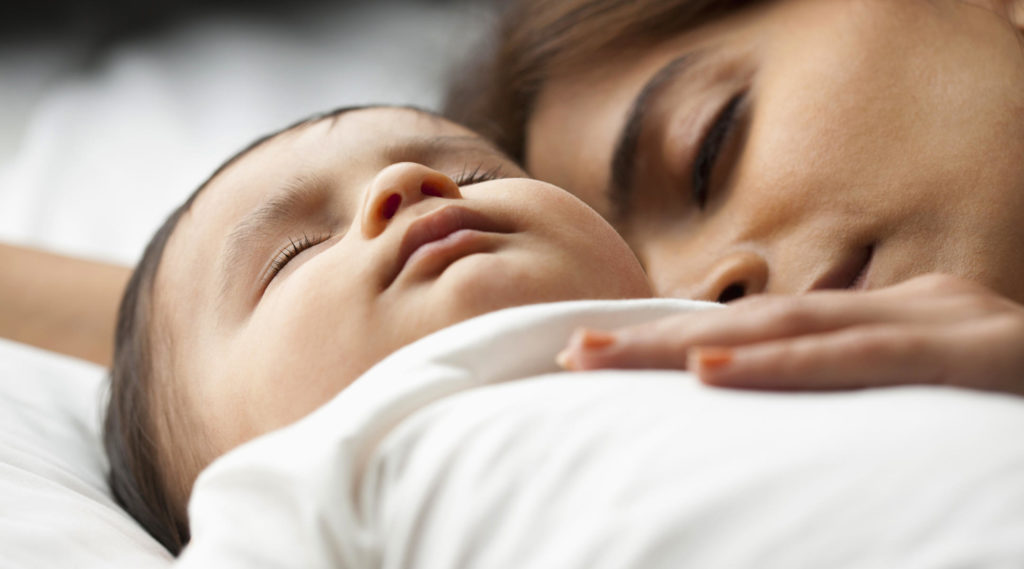
Good sleeping habits start early.
As you get your new baby settled in at home, starting a sleep training regimen helps a baby learn how to fall asleep and stay sleeping through the night on their own. Some little ones take to sleep training effortlessly and others need a little more patience and encouragement to develop their own sleeping patterns.
Not every sleep training technique works for everyone and with the right support system in place, parents can find the sleep training method that aligns best with their parenting style and the needs of their baby.
When can I start sleep training?
Most sleep training professionals recommend starting a sleep training routine when your baby reaches their 4 to 6 month milestone. By this point, most babies have stopped night feedings and is starting to develop their own sleep-wake cycle. Developmentally, babies of 4 to 6 months can safely sleep through the night in long stretches. All babies are different, and your little one might not be ready to start sleep training until 8 or even 10 months old. Consult with your doctor if you have any questions about your baby’s development or if you’re unsure about when to start sleep training.
Preparing to Sleep Train
Any good night’s sleep begins with a bed time. A good starting place is to introduce a bedtime routine and many parents have night time rituals already in place as early as 6 weeks. It’s never too late for an evening relaxation routine including a warm bath, a bedtime story or a lullaby. Keep bedtime consistent and at the same time each night. Experts recommend 7 to 8pm to keep your baby from becoming overtired and fighting sleep. The predictability of bedtime, nap-time and waking each morning, helps your baby relax and acclimate to a natural sleep pattern.
Set the Scene
Your baby’s bedroom, nursery or sleep space should be comfortable and invite sleep. Keep lights dim and the temperature cool and comfortable at a 65 – 75 degrees. If your nursery is sunny during the day, room darkening shades can help your little one relax for nap-time and help them develop their own circadian rhythm. This rhythm encourages your baby to get sleepy at sundown and wake in the morning. A white noise machine can also be useful in creating a comforting space for your baby to relax and get a good night’s sleep. Lay your baby down while they’re awake to help encourage them to be comforted by the space around them each night.
Technique
There’s tons of sleep training techniques to choose from that includes everything from co-sleeping to “cry it out” and everything in between. A starting point that many parents feel comfortable with is “move the chair.” Use the same calming techniques as you lay your baby down for sleep at night, while sitting in a chair near their crib. Every three nights move your chair further away from the crib until you’re ultimately out of the room and out of view. Keep this move consistent to keep your little one feeling dependent on your presence in the nursery for them to fall asleep.
As with beginning any training or parenting routine with your baby, patience and support is key.
Sleep training can be a frustrating process, but with patience, your baby will be sleeping soundly and all on their own. Not every family or baby is the same and being flexible with your sleep training styles can help you find the method that is right for you and your baby.
